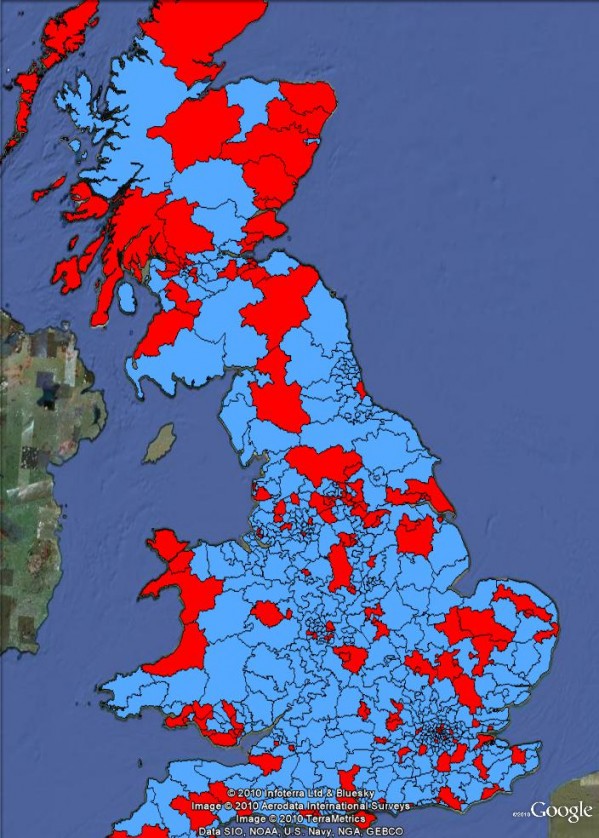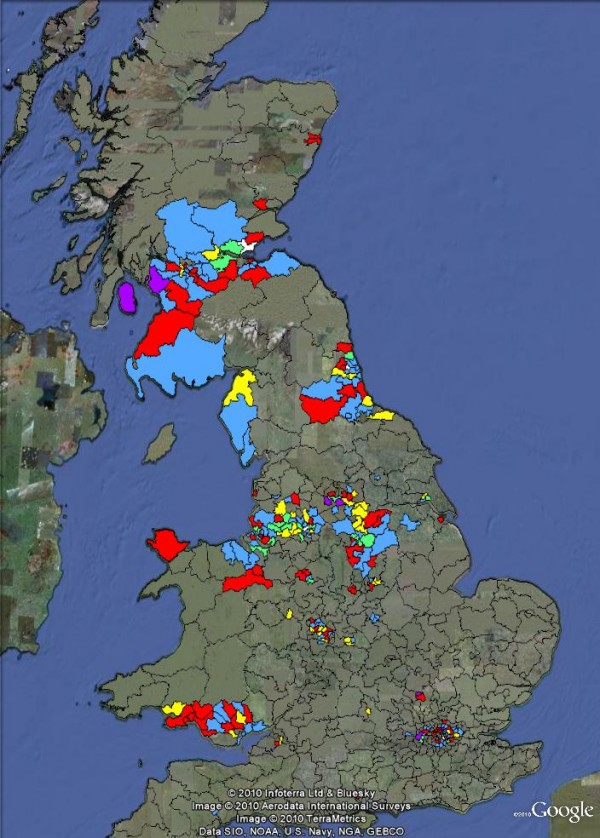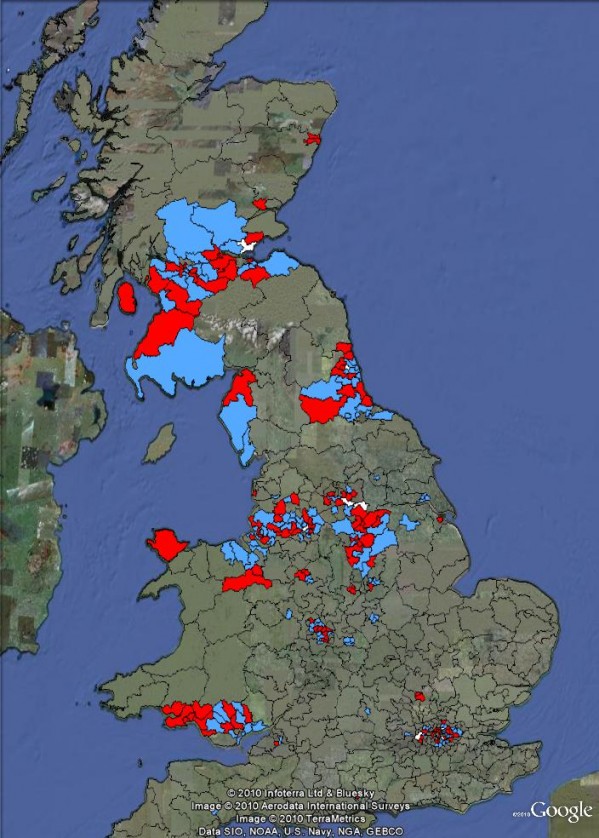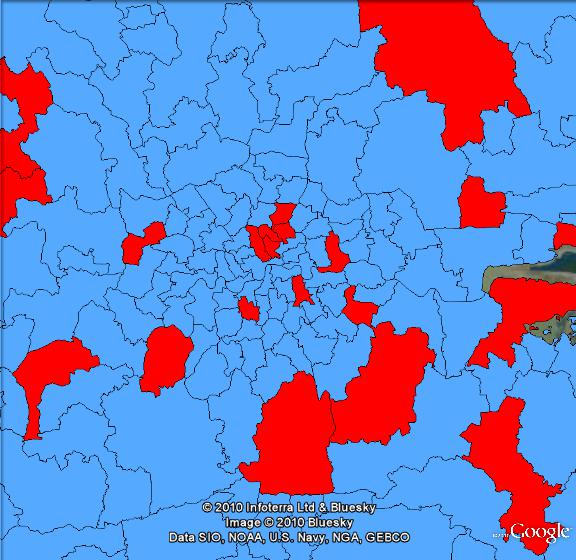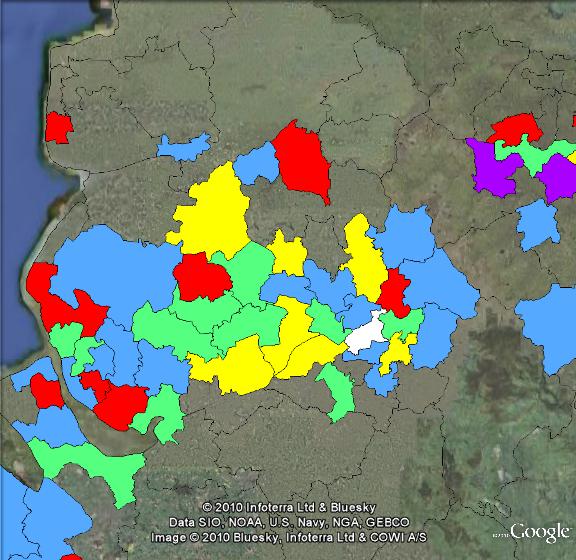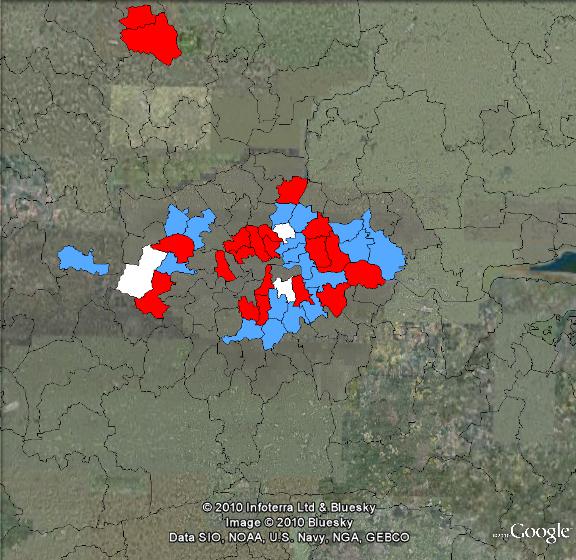The UK Labour Party has provided a great deal of data on how members voted in the recent election for the leadership of the party.
The Labour website has published the full preference ballot for all Members of the House of Commons and the European Parliament. They also published the primary vote results for each local branch of the party and each affiliated organisation.
After extensive analysis, you find that the result does not vary wildly across the country. On primary votes, David Milliband won the most votes in 546 constituencies, Ed Milliband in 73, Andy Burnham in 11, and Ed Balls in only two. Diane Abbott won the most votes in no constituency. In contrast, all four other candidates won in their own constituency. Using an estimate of preference flows to calculate a “Two Milliband Preferred” figure, you end up with David winning 467 constituencies and Ed winning 166 constituencies, showing a very consistent result, considering David only won 54.4% of the result nationally.
When you examine constituencies according to which party won each seat at the 2010 general election, you find some interesting trends. David Milliband won just under 55% in both Labour and Conservative constituencies, but only won 51.5% in Liberal Democrat constituencies. It’s worth noting that, despite Labour winning far less than a majority of seats in 2010, 49.9% of Labour members who voted live in Labour constituencies.
When you examine how each individual constituency MP voted, you find a very different picture. Abbott received the vote of 7 MPs, Balls 40, Burnham 23, David Milliband 105, and Ed Milliband 78. Four MPs did not vote: former leader Gordon Brown, acting leader Harriet Harman, chief whip Nick Brown, and party chairman Tony Lloyd.
In addition, thirteen Labour Members of the European Parliament also voted. 6 voted for David, 6 voted for Ed Milliband, and one voted for Andy Burnham, giving a second preference to Ed Milliband.
Amongst MPs, the two-candidate preferred vote broke down as 134 for David Milliband, 115 for Ed Milliband, and 4 that exhausted. Those four exhausted votes included the votes of leadership candidates Diane Abbott and Ed Balls, Balls’ wife Yvette Cooper, and prominent left-winger John McDonnell, who originally planned to run before dropping out and endorsing Abbott.
You can also break down the vote amongst MPs by gender. Amongst women, who make up about a third of the voting bloc, Ed Milliband performs much more strongly and Andy Burnham much worse. On a two-candidate basis, David wins 55.5% amongst men, and Ed wins 51.8% amongst women.
I have also broken down the results by the nine regions of England, as well as Scotland and Wales. In most regions, David Milliband wins a slim majority on preferences, amongst both MPs and party members. It’s worth noting that in a number of regions there are a really small number of Labour MPs. In the East of England, Labour only holds the two seats in Luton. They only hold four seats each in South East England and South West England.
There are few exceptions. Out of Burnham’s 24 MP votes, half of those are in the North West, where he won more MP votes than Ed Milliband. He also polled over 19% amongst members in that region, despite not getting over 10% in any other part of the country. Burnham holds a seat in Greater Manchester, so it’s not at all surprising.
In the West Midlands, Ed Balls won the votes of 8 MPs, to nine for David Milliband and seven for Ed Milliband. This isn’t due to any local link: Balls and his wife hold seats in West Yorkshire. Neither did he perform particularly well amongst party members in that region.
Ed Milliband won a majority of MP votes in Wales and Yorkshire. In 168 constituencies, the Labour MP cast their primary vote the same way as the plurality of their constituency, but in 81 their paths diverged.
Below the fold are a bunch of maps I have made showing this geographical distribution:
David Milliband is marked in blue, Ed Milliband in red, Andy Burnham in green, Ed Balls in yellow and Diane Abbott in purple.
